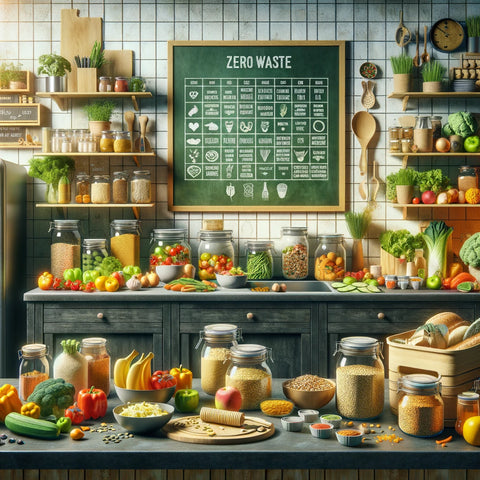Maximizing Kitchen Efficiency through Zero-Waste Meal Planning
Nourishing the Planet: The Art of Zero Waste Meal Planning
Planet
Zero-waste meal planning saves food and packaging, helping the environment. This improves food mindfulness, kitchen creativity, money savings, and the environment. My zero-waste meal planning advice and stories are here.
Planning begins zero-waste meal planning. Check your pantry, fridge, and freezer first. The inventory check discourages overbuying and promotes reuse. I keep a pantry necessities list on my phone to avoid duplication and refill rice, beans, and spices.
Smart-shop
Smart shopping matters. Reduce packaging at the grocery store and farmers' market with reusable bags, containers, and jars. Keeping nuts, grains, spices, and tea in containers has grown on me. The eco-friendliness and food processing relationship make me appreciate my meal.
Eat Local and Seasonal
Local and seasonal items help zero-waste meal planning. Fresher, lighter, and less traveled alternatives reduce carbon impact. I love discussing sustainability with farmers and receiving seasonal recipe ideas at farmers' markets.
Use Leftovers Creatively
Zero-waste meal planning encourages leftover creativity. Using leftovers in new ways has changed my cooking. Evening grains and roasted vegetables can be used in breakfast hash and a huge salad. This cuts waste and diversifies meals.
Compost Scraps
Despite your planning, scraps will happen. Turn trash into rich soil to close the circle. Starting a compost container to recycle kitchen waste and yard waste changed my life.
Continuous Learning, Flexibility
Finally, zero-waste meal planning requires constant learning and adaptation. If feasible, pick better above perfection. I buy plastic and rubbish food periodically. We need reflection and growth, not guilt.
Imagine a zero-waste kitchen with eco-friendly meals and every thing functional. Waste reduction and resource gratitude are emphasized by this diet. 





Leave a comment